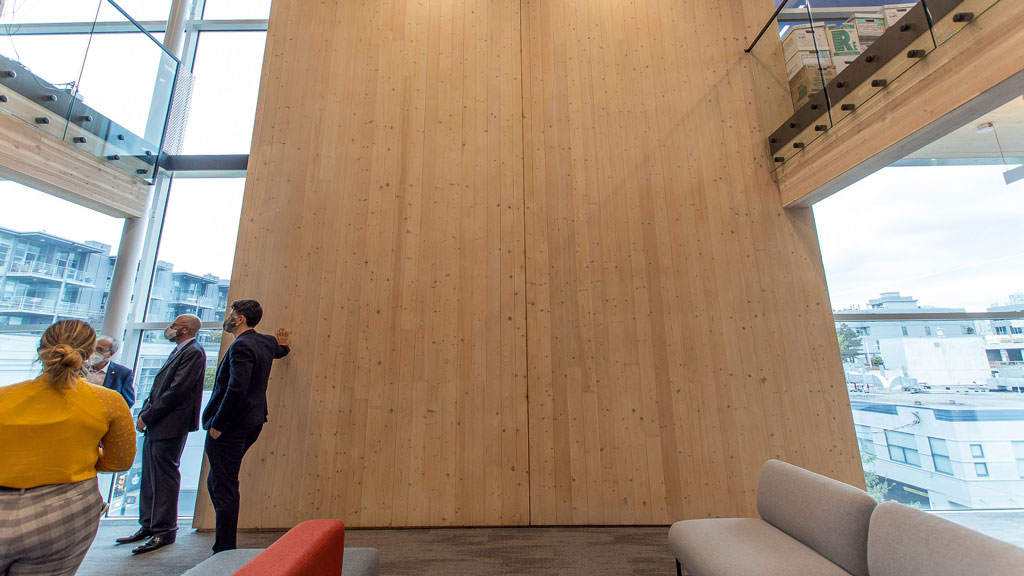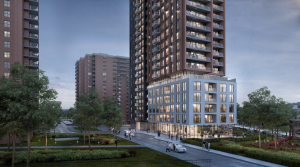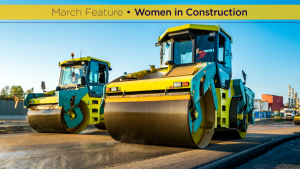Experts at FP Innovations (FPI) believe using wood technology could play a major role in helping Canada meet its climate goals.
Canada’s climate plan is aiming to achieve net-zero emissions by 2050. FP Innovations stated that the emergence of new engineered-wood products and changes to building codes have led to innovative systems for constructing larger and taller buildings that are both safe and cost-competitive, while also responding to increasing environmental concerns.
“Wood buildings tend to have a lower environmental footprint than equivalent concrete or steel buildings,” said Patrick Lavoie, senior scientist of environment and sustainability at FP Innovations. “That’s one tangible way sustainable construction can help the economy recover and address climate change concerns.”
Lavoie explained studies show construction accounts for roughly 11 per cent of the world’s greenhouse gas emissions. He noted in Canada the portion of embodied emissions compared to operating energy emissions is much higher.
“I think the products themselves are innovative and are being increasingly adopted in Canada,” said Lavoie. “I think a lot the challenge facing CLT and engineered wood product manufacturers is getting their products known and making sure material specifiers are able to specify these materials in buildings.”
Lavoie added many are interested in using wood for buildings but often lack knowledge about specific products.
Groups like the Canadian Wood Council can help disseminate that information. Lavoie said FPI has been focused on developing products, long-term building monitoring and simulation tests.
“There is a lot of data being produced to help understand some of the areas that need to be accounted for,” said Lavoie.
For example, FPI has installed equipment to monitor innovative projects like Brock Commons, an 18-storey mass timber student housing tower at the University of British Columbia. Its team is also supporting the development of mass timber facades, hybrid floors and prefabrication methods.
“Many things are being done from FPI’s perspective to develop the innovation that industry is willing to adopt – not just manufacturers but builders, engineers and architects,” he said.
The research team is also looking to tackle one of the country’s top issues: affordable housing.
FPI is working on an affordable, prefabricated housing concept. Modules could be sent to more remote regions where labour is hard to source.
“To have modules that could be assembled quickly, that are standardized, can help build projects quickly,” he said. “We are seeing more and more of these concepts being adopted and there is even recognition at the municipal level that mass timber and wood construction can be a good vehicle to promote affordable housing.”
Lavoie explained government can do its part to encourage lower emissions construction.
He cited Vancouver’s “material agnostic” approach that encourages lowering embodied emissions through whatever materials builders wish. He also highlighted Quebec’s approach to require carbon footprint evaluations.
“To have programs or policies that are supporting, measuring or evaluating embodied emissions and trying to promote materials that have lower emissions is a good direction to go in,” he said.
Follow the author on Twitter @RussellReports.











Recent Comments
comments for this post are closed